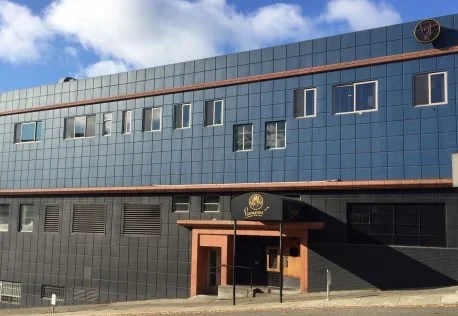Fred J. Rogers: Architect of Old World Charm
Many years ago my husband and I were attracted to the curving streets and variety of charming home styles in Queen Anne Park on the north side of the hill. At that time we had no idea how many talented people were involved with this carefully planned development of English Tudors, bungalows, and Spanish and colonial revivals. It took us decades to discover Fred J. Rogers, the architect of many homes in this area and numerous neighborhoods in Seattle.
Rogers was born in Portland, Oregon in 1900. He apprenticed there in 1922-23 with A. E. Doyle, completed graduate studies at the University of Washington, and worked with the Bebb & Gould architects in Seattle. After 1926 he worked in private practice as a residential designer, and many of his early homes were of the English Tudor Revival style.
The example shown above in Queen Anne Park was designed by Rogers and built by Beck and Rasmussen in 1930. Teams of contractors and planners shaped the unique development of homes in this neighborhood. The Great Depression slowed these plans considerably.
The complete story of Queen Anne Park by historian Florence Helliesen may be found on the Queen Anne Historical website at https://qahistory.org/articles/queen-anne-park/.
The Tudor Revival style emerged in part from the Arts and Crafts period in the late 1800s. Architects borrowed picturesque medieval details such as half-timbering, rounded front doors and artful exteriors in brick, wood and stucco. The style was adapted to large apartment buildings and estates, but also worked for smaller homes. Rogers built many of them in the late 1920s and 30s and was quoted as saying, “I have been busier the last three months designing homes than I had been for many months previous. In fact, the demand for homes has kept me working overtime. Conditions seem to be very favorable for home construction this spring and people are taking advantage of these conditions.” This quote was recorded when he was working in Queen Anne Park. The article mentioned that Magnolia Bluff was also seeing a great deal of activity.
Rogers specialized in attractive homes with formal spaces, curved archways, rich mahogany trim and intimate breakfast alcoves. Laundry chutes and nooks for telephones were also considered desirable features in that period.
In addition to Queen Anne and Magnolia, Rogers designed homes in Laurelhurst and the University District. Rogers is quoted as saying about one Madrona home that he was inspired after seeing rural cottages in England.
Sometimes Rogers designed several Tudors in a row on a block, featuring distinctive facades to set them apart from each other. Maple Leaf Tudors on NE 81st street near Tenth Avenue Northeast show this neighborhood trend.
Fred Rogers moved into mid-century styles later in his career. An interesting example shown above is the 1953 building for the Sailors Union of the Pacific at First and Wall in Belltown. The contractors for this project were Haddock Engineers and K. G. Bitter of San Diego. Offices were on the main floor; services for sailors on the lower floor included a gym, café, barber shop and showers. Its top floor had 22 small rooms where sailors could stay between trips. This building has been transformed in recent years into the new El Gaucho restaurant and Inn. The careful preservation of the exterior illustrates how an older building may be reinvented for a modern use.
Not all buildings designed by Rogers will survive. His 66-unit apartment buildings built in the 1940s at 100 Roy Street are slated (as of November 2018) to be demolished for a taller structure. The rezone of this neighborhood will increase the number of units, but they will probably be more expensive than rent in these older buildings.
Fred Rogers died of a stroke in 1957 after practicing architecture for 34 years. He was one of many busy artists who brought enchantment, elegant homes and livable neighborhoods to a growing Seattle.
Sources:
Queen Anne Park: The Story of a Neighborhood, Florence Helliesen;
Shaping Seattle Architecture: A Historical Guide to the Architects, Jeffrey Ochsner;
Classic Houses of Seattle, Caroline Swope; Seattle.gov, Seattle Historical Sites; Queen Anne & Magnolia News





